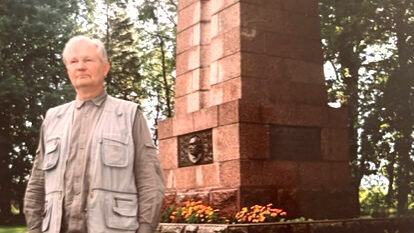One of the most regrettable historic handshakes was of British Prime Minister Neville Chamberlain’s pressing the flesh of German Chancellor Adolf Hitler, striking a 1938 deal in Munich. Chamberlain allowed the Nazi occupation of the Sudetenland in return for a separate peace between Germany and Britain. The prime minister said the agreement ensured “peace for our time.” He returned to a hero’s welcome in London. Chamberlain’s handshake with Hitler came to be a regrettable symbol of appeasement, a symbol that still evokes the emboldening of an enemy who saw the foe as weak. Any parallels here with those who demand appeasement with Russia?
Shortly after the surrender of Nazi Germany in 1945, Allied leaders met in Potsdam, Germany, to shape postwar Europe. President Harry Truman, British Prime Minister Winston Churchill, and Soviet dictator Josef Stalin posed for a smiling handshake. Serious suspicions about Moscow’s plans in Central and Eastern Europe filled the open discourse of victim countries. Potsdam drove a nail into the coffins of the captive nations of Europe. Less than a year later, Churchill spoke of the “iron curtain” that had imprisoned half of subjugated Europe.
Become a subscriber to continue reading!
Every week we bring you news from the community and exclusive columns. We're relying on your support to keep going and invite you to subscribe.
Starting from $2.30 per week.



